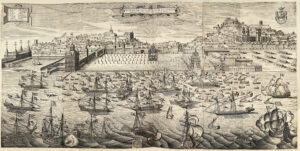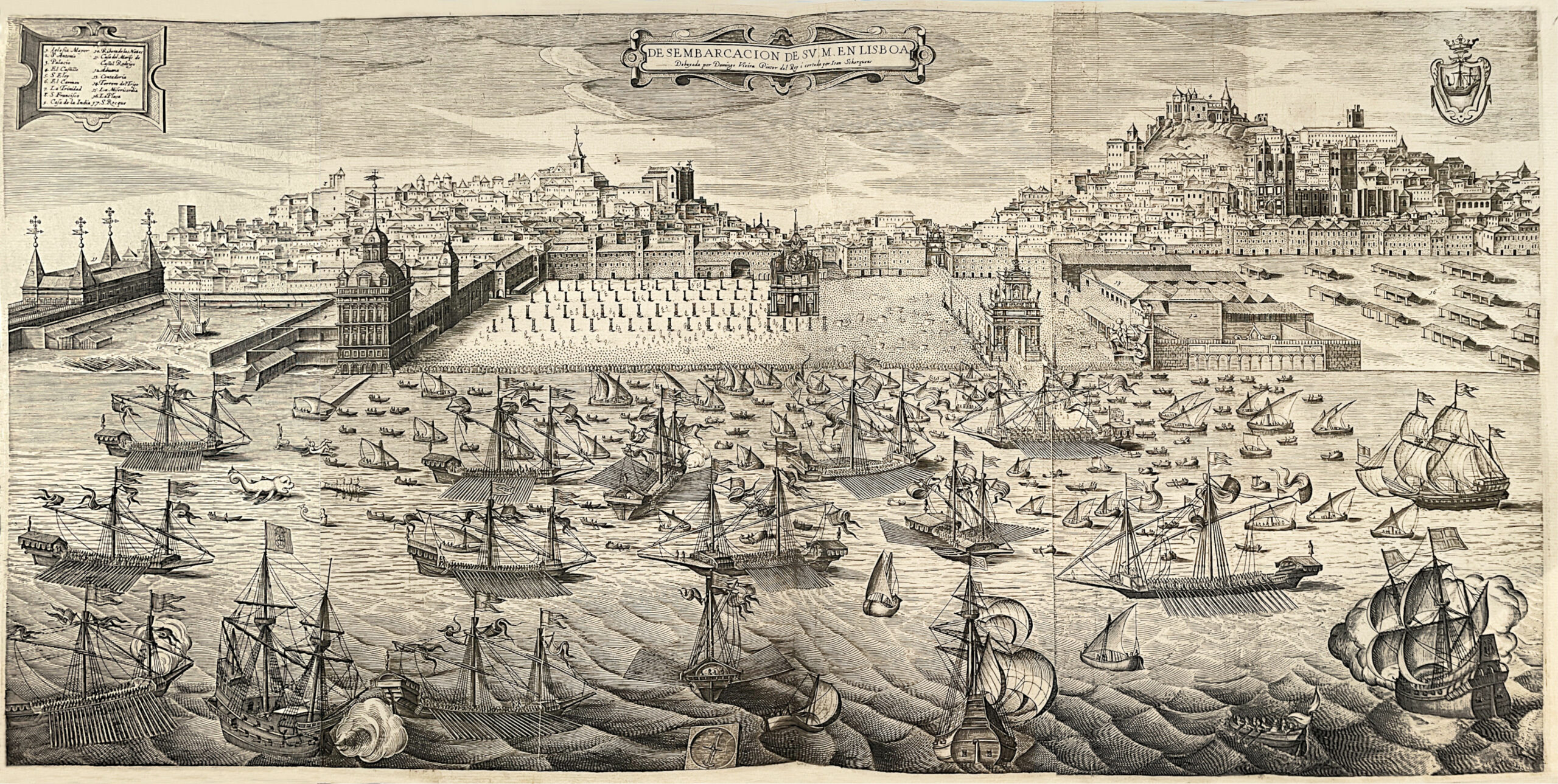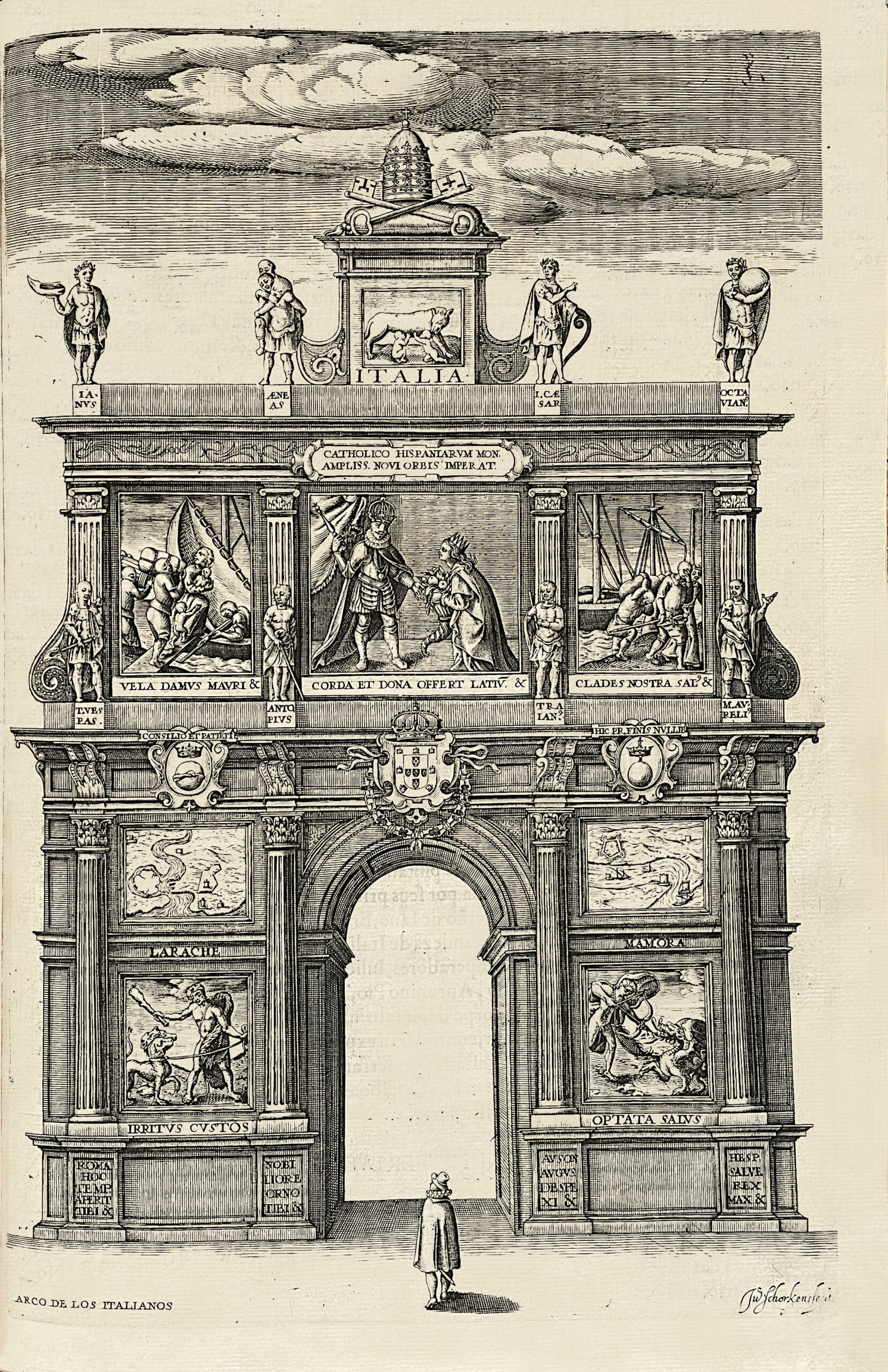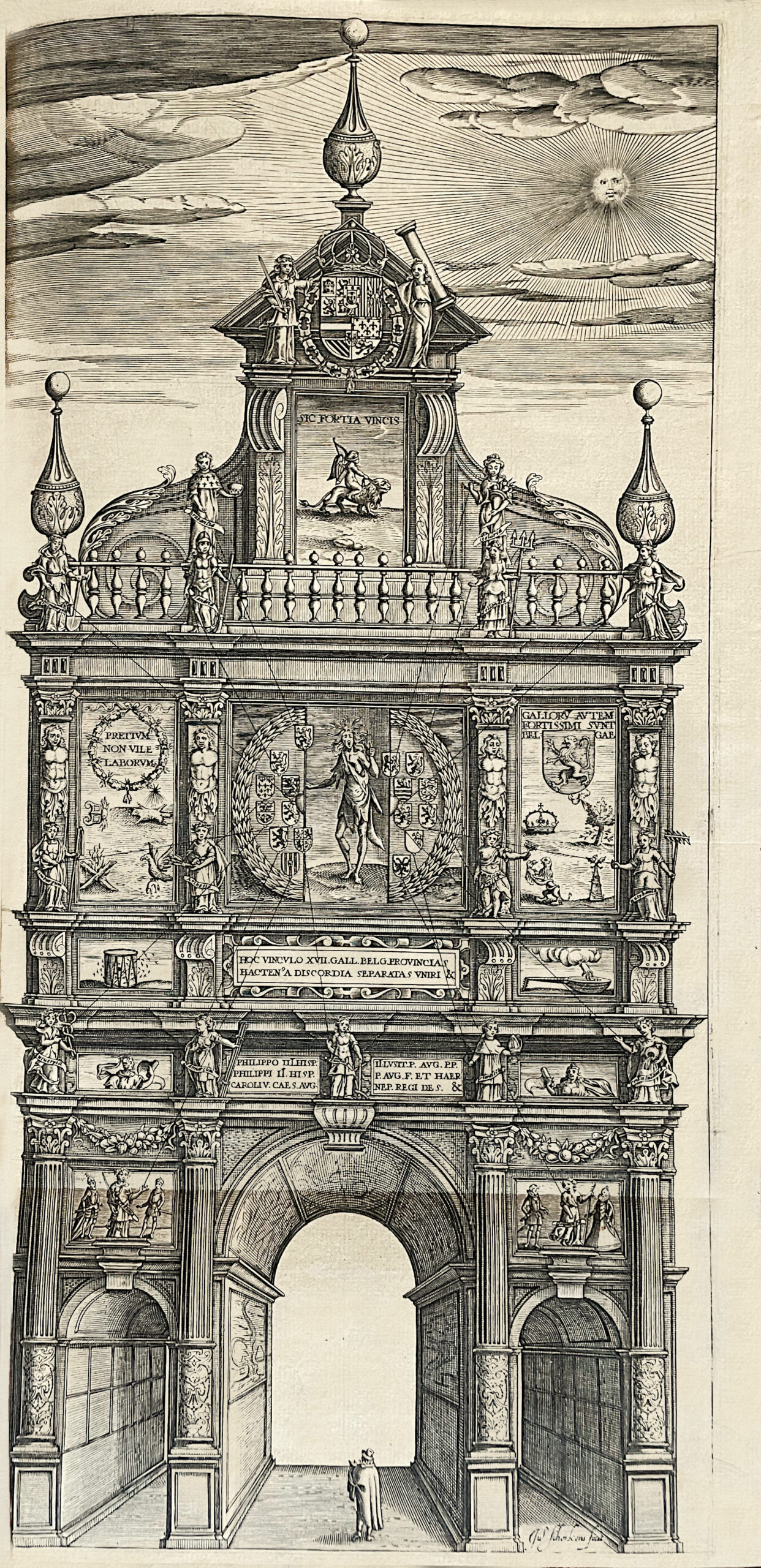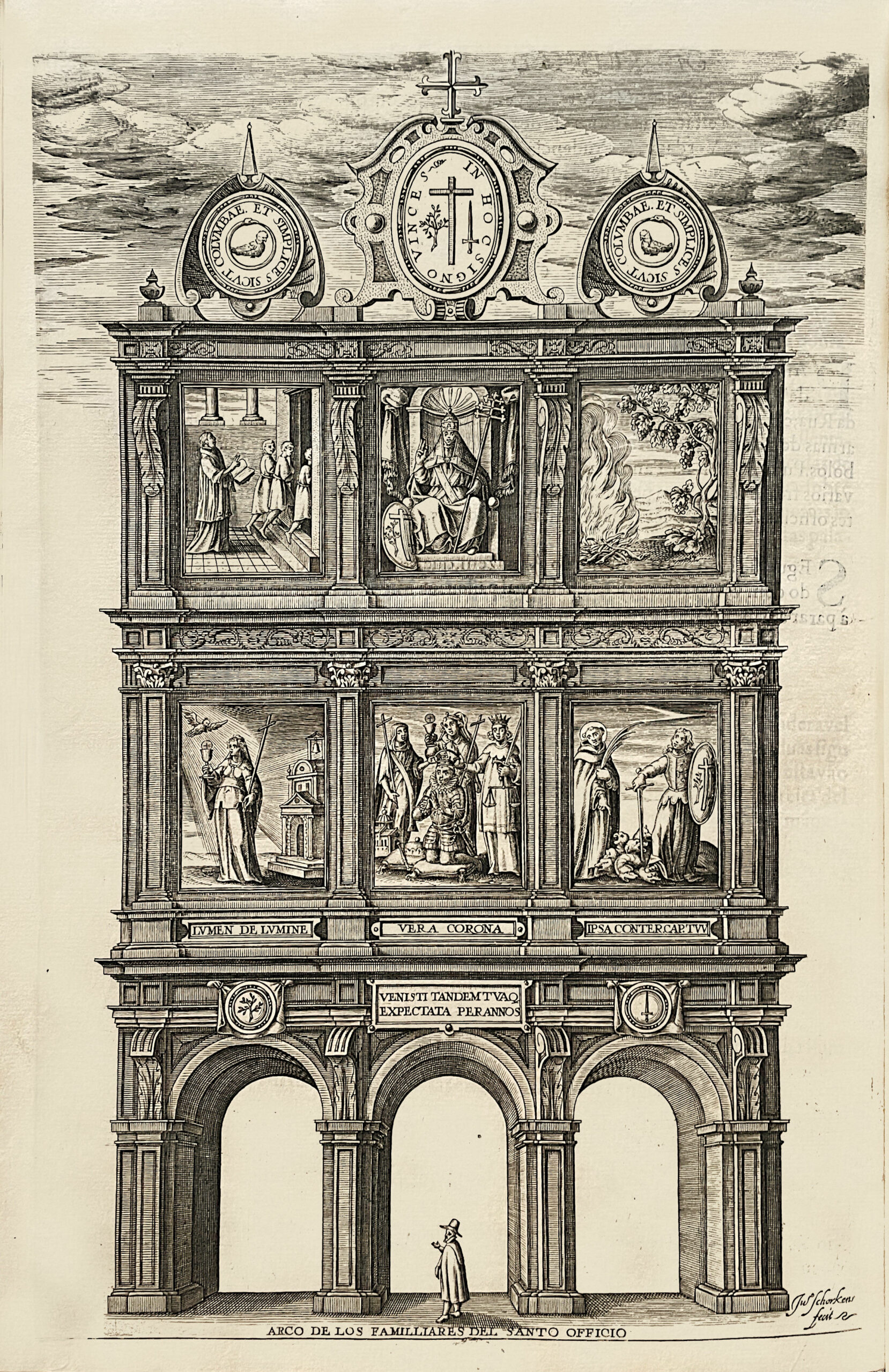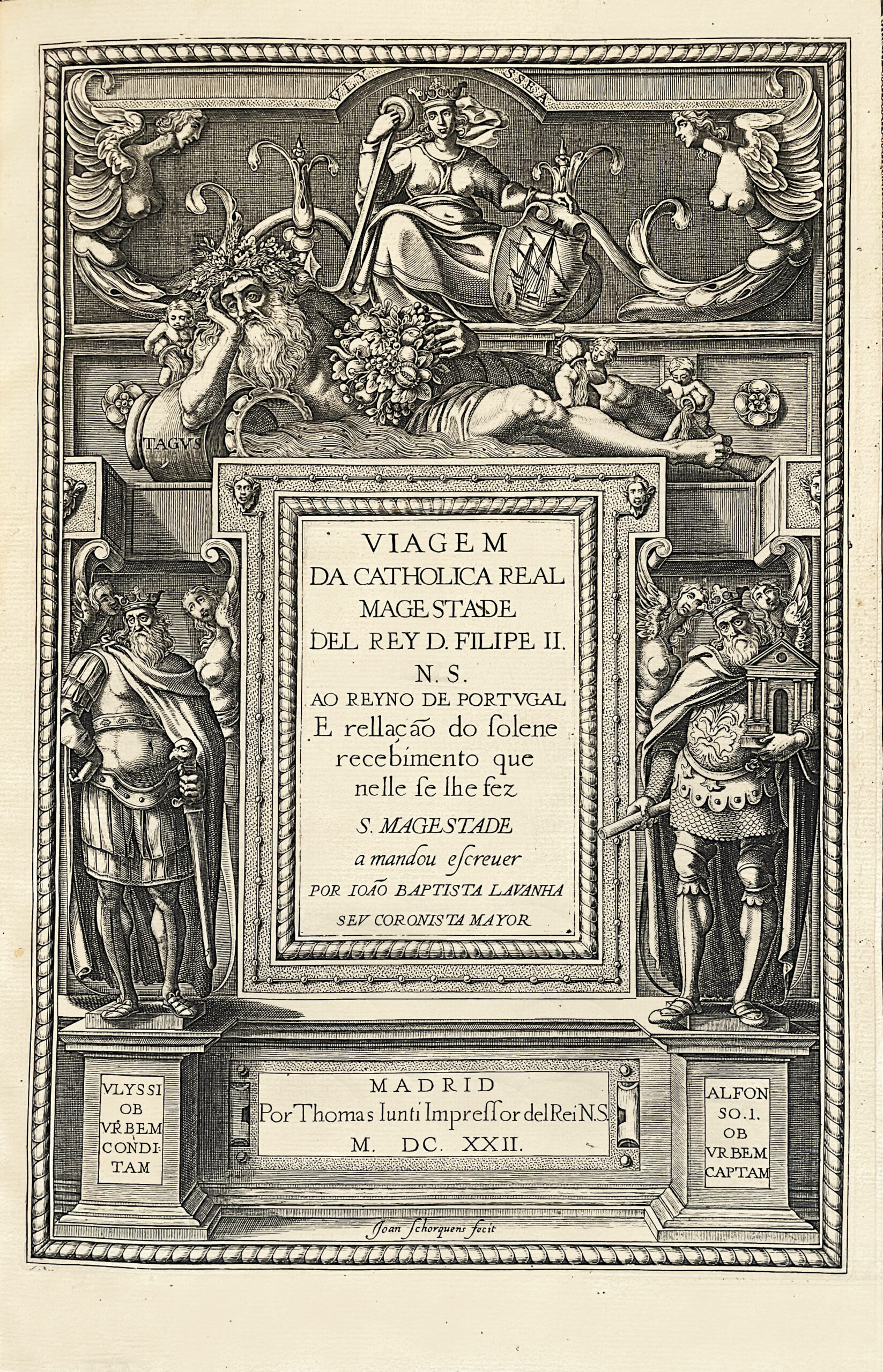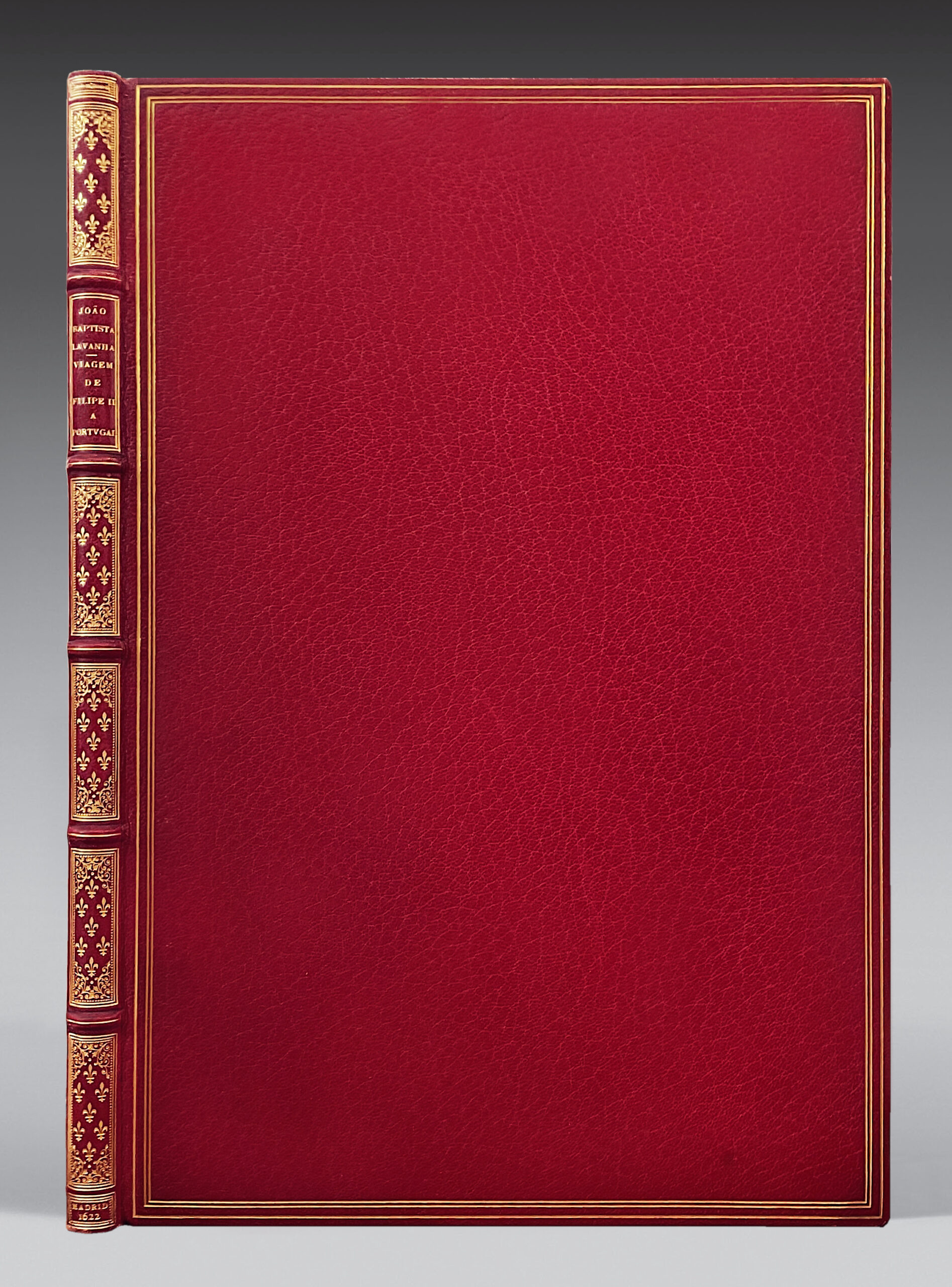Madrid, Thomas Junti, 1622 (fin 1621).
In-folio de (2) ff. bl., titre frontispice, (2) ff. d’approbation et de dédicace, 78 feuillets de texte, 15 planches gravées dont 3 dépliantes, petit trou f. 25.
Plein maroquin rouge, triple filet doré autour des plats, dos à nerfs fleurdelysé, double filet or sur les coupes, roulette intérieure, tranches dorées. Lortic fils.
329 x 222 mm.
Edition originale d’une insigne rareté de ce livre décrivant les festivités qui entourèrent l’entrée de Philippe III d’Espagne (1578-1621) à Lisbonne en 1619.
Elle manque à Brunet, à Ruggieri, à Chadenat, à Deschamps etc.
Berlin 3090; Hofer Baroque Book Illustration 87.
Vinet la décrit sans l’avoir vue : « Nous n’avons pas vu l’ouvrage… » mentionne-t-il.
Ce livre de Jean-Baptiste Lavanha s’attache au voyage de Philippe III d’Espagne au Portugal, du temps où le Portugal était rattaché à l’Espagne.
C’est en 1580 que le Portugal se trouve absorbé par la monarchie espagnole de Philippe II. Cette domination dura soixante ans, sous Philippe II et sous ses successeurs immédiats (de 1580 à 1640). Les colonies portugaises des Indes orientales eurent le sort de la métropole et, comme elle, tombèrent, ipso facto, sous la dépendance des rois de la dynastie austro-castillane, dont l’empire s’étendit ainsi à la fois sur les Indes occidentales (l’Amérique) et les Indes orientales (côtes de Malabar, Ormuz, etc.), au-delà de l’Atlantique et dans l’océan Indien. Les Portugais, toutefois, ne subirent qu’à regret la domination espagnole.
Le récit de Lavanha fut publié à Madrid en 1622, en portugais et en Castillan.
Superbe volume orné d’un titre frontispice et de 15 planches gravées par Juan Schorquens, graveur et dessinateur hollandais, travaillant à Madrid au début du XVIIe siècle (Ec. Hol.).
« Il travailla à Madrid de 1618 à 1630. Il signa quelquefois J. van Schorquens, fecit, in Madrid. Il a surtout travaillé pour les libraires et l’on cite de lui de remarquables frontispices ».
Le volume s’ouvre par une grande vue dépliante de Lisbonne vue depuis la mer le 29 juin 1619, lorsque Philippe III arriva à Terreiro do Paco. Cette vue manque à un certain nombre d’exemplaires.
Les gravures à pleine page illustrent 13 des 20 arcs de triomphe érigés pour l’entrée du roi Philippe II : America. 17 Provinces belges. Arco de Los Ingleses ; Arco de Los Italianos ; Arco de Los Alemanes, etc…
A very rare festival book describing the celebrations surrounding the entry of PHILIP III of Spain (1578-621) to Lisbon in 1619.
Philip, who ruled Portugal as Philip II from 1598 to his death in 1621, visited on his own initiative and against the view of both the Council of State and that of Castile. He was accompanied by the Prince of Asturias (future Philip IV).
The king’s visit had been postponed several times, but when it finally took place, it was celebrated with the grandeur due a monarch whose rule extended over five continents. Joao Baptista Lavanha, the Cronista-mayor, or the king’s chief chronicler, followed the royal progress from Madrid to Lisbon. In vivid reports of the ceremonies prepared in each town on the journey, Lavanha interpreted the ephemeral constructions erected in the king’s honor, explaining mythological references and translating Latin inscriptions. Lavanha’s account was published in Madrid in 1622, in both Portuguese and Castilian editions. The book opens with a large print showing a bird’s-eye view of the Lisbon waterfront on 29 June 1619, when Philip III arrived at the Terreiro do Paco, the main square of the city. The etchings reproduce thirteen of the twenty triumphal arches along the king’s progress; these were apparently drawn by the Portuguese court painter DOMINGOS VIEIRA SERRaO and then etched by Jan Schorkens, Flemish printmaker living in Madrid. Of varying size and complexity, the arches were erected by the Inquisition, by various guilds (including merchants, silversmiths, painters, tailors, and lapidaries), and by the English, Flemish, German, and Italians communities in Lisbon. In the 1619 entry, some arches expressed the desire of the city of Lisbon to become the capital of the empire; in others, the Portuguese reminded the king of their old and often-ignored privileges.
Très bel exemplaire conservé dans son élégante reliure en maroquin rouge signée de Lortic fils.
